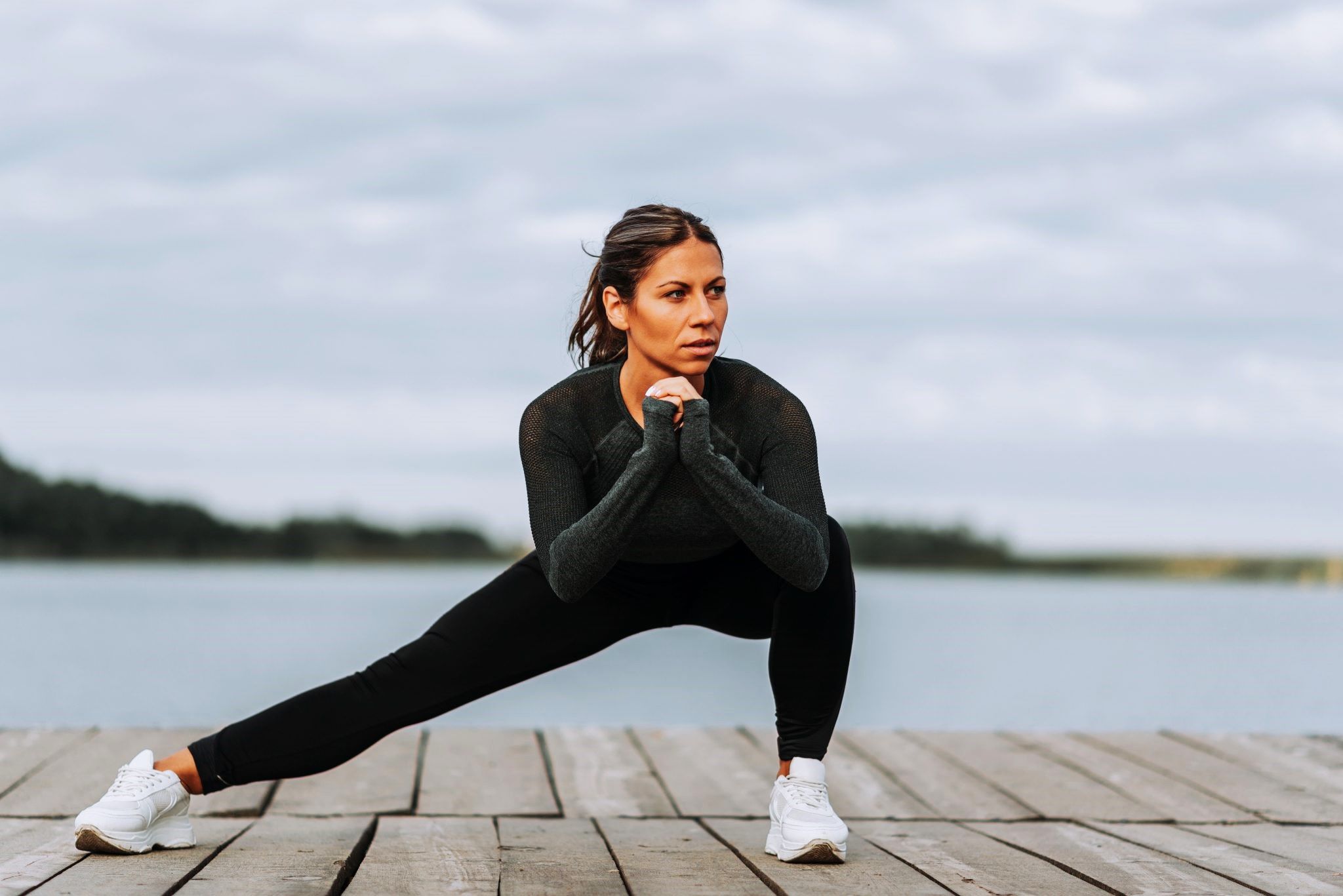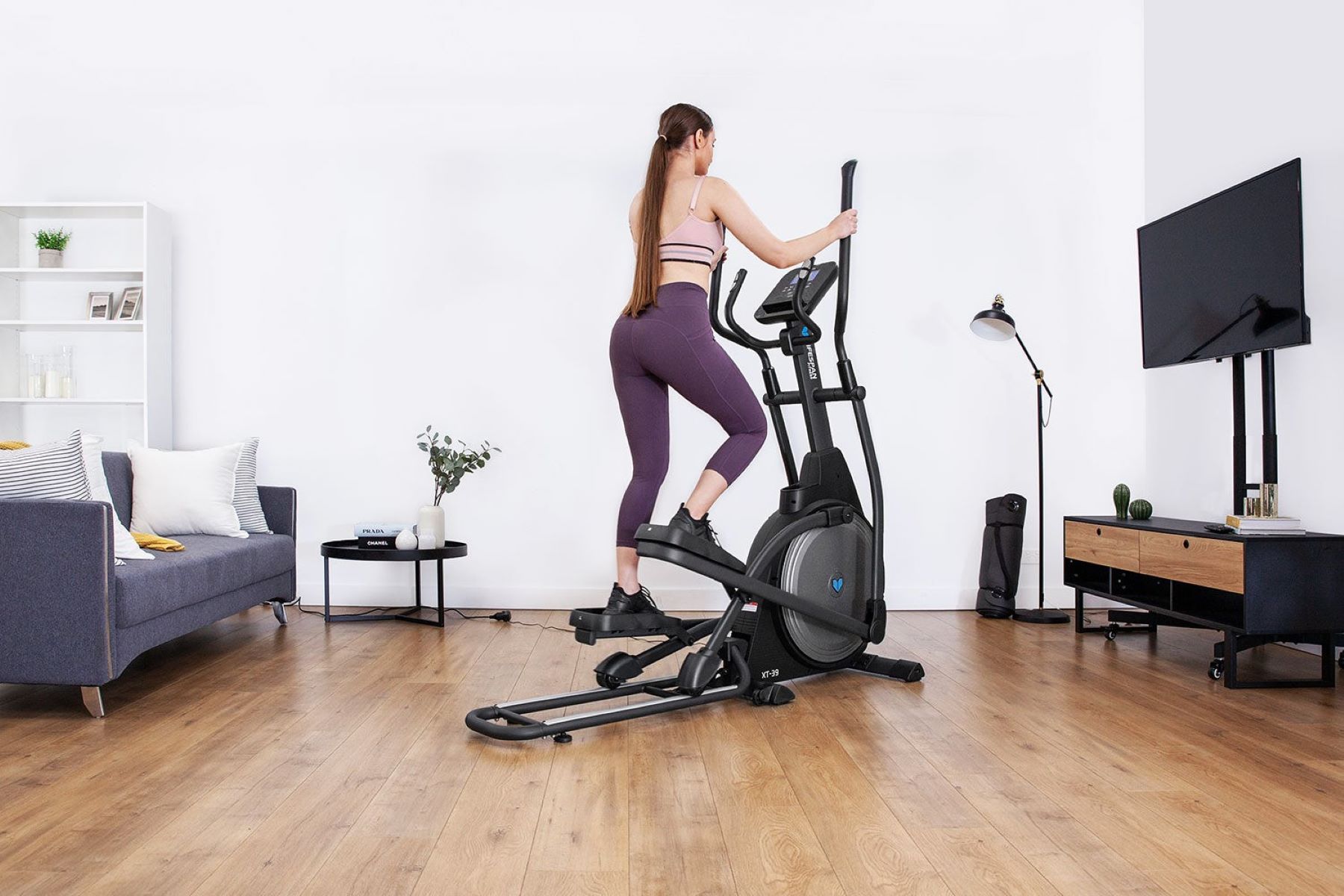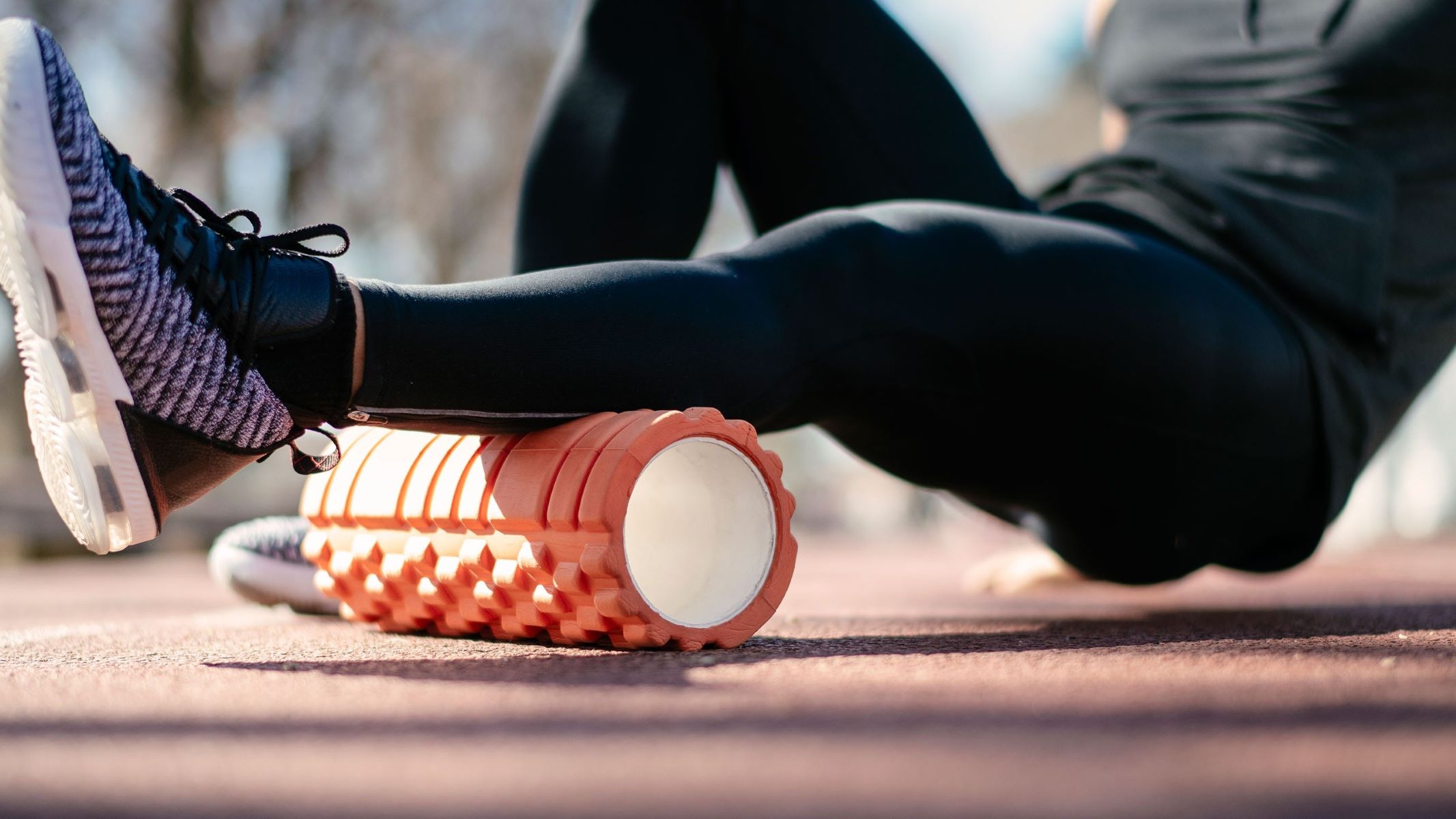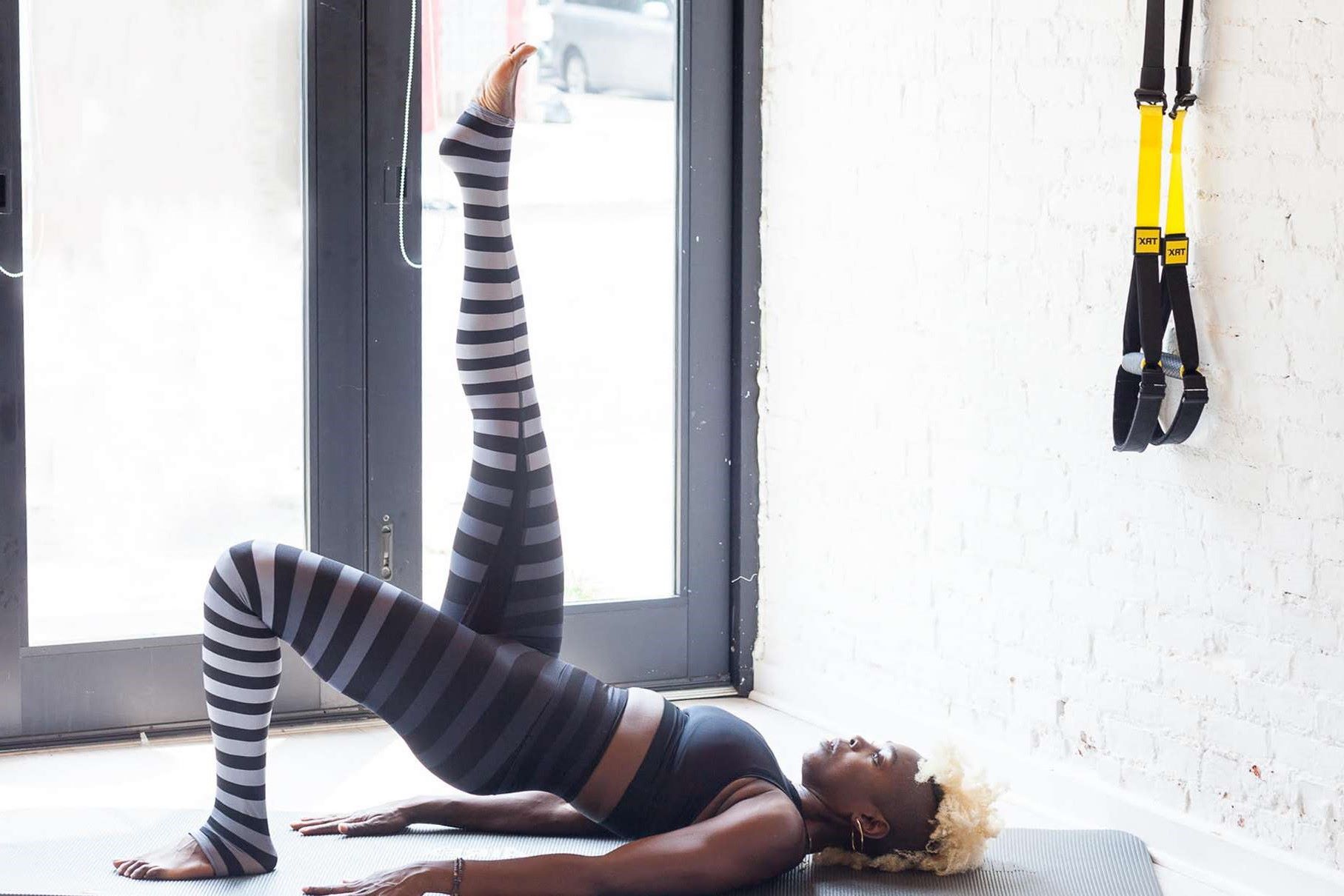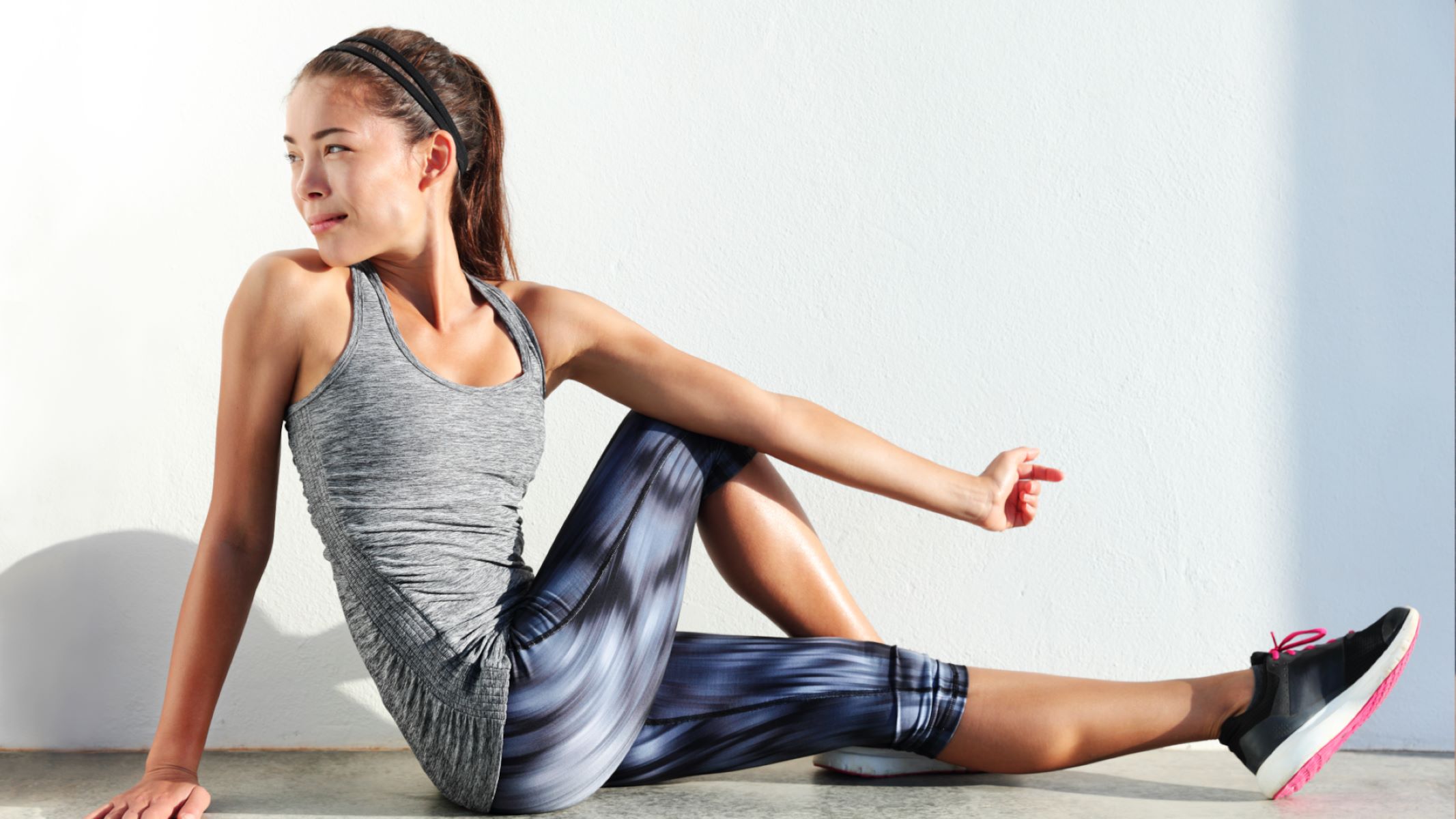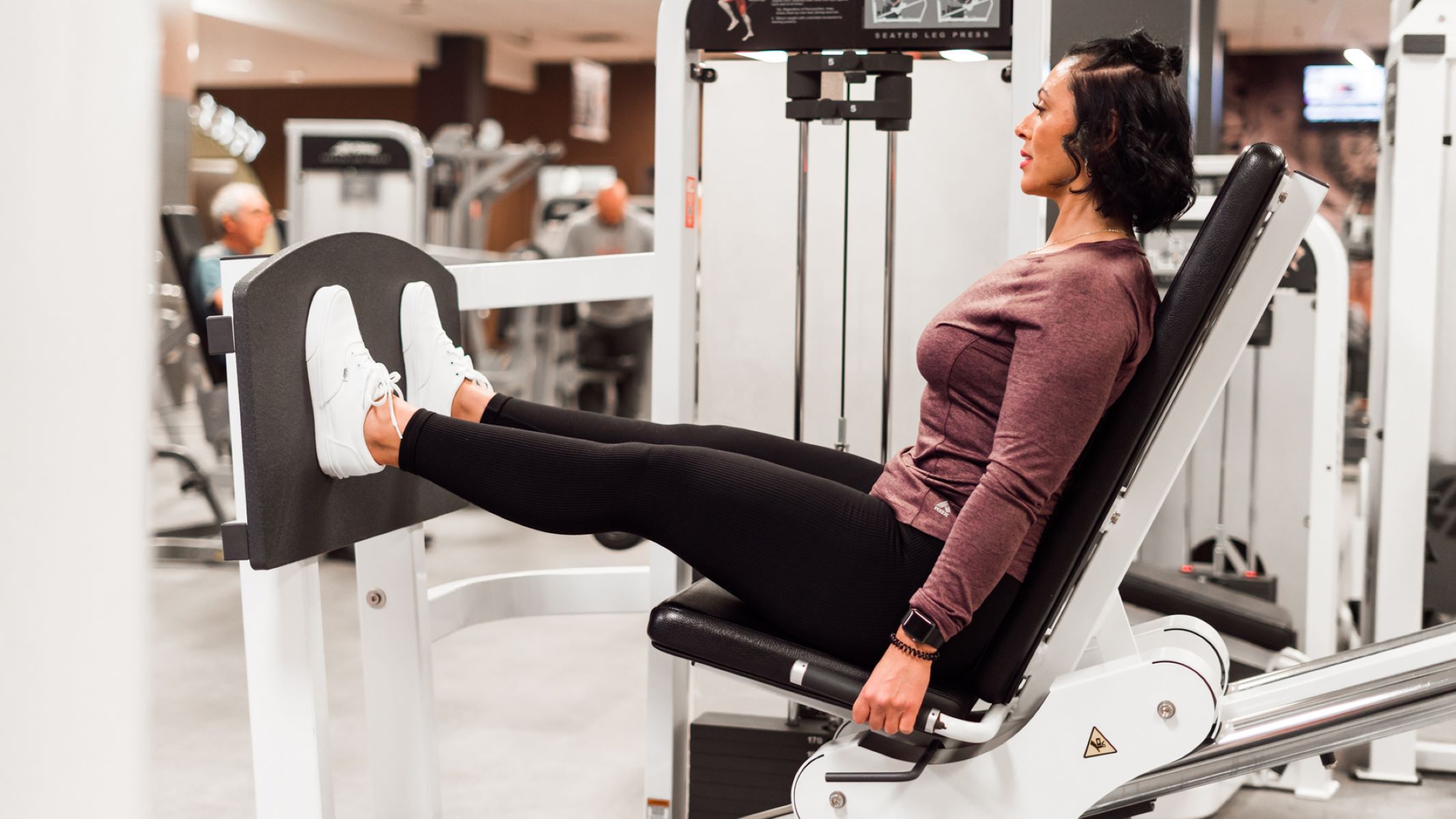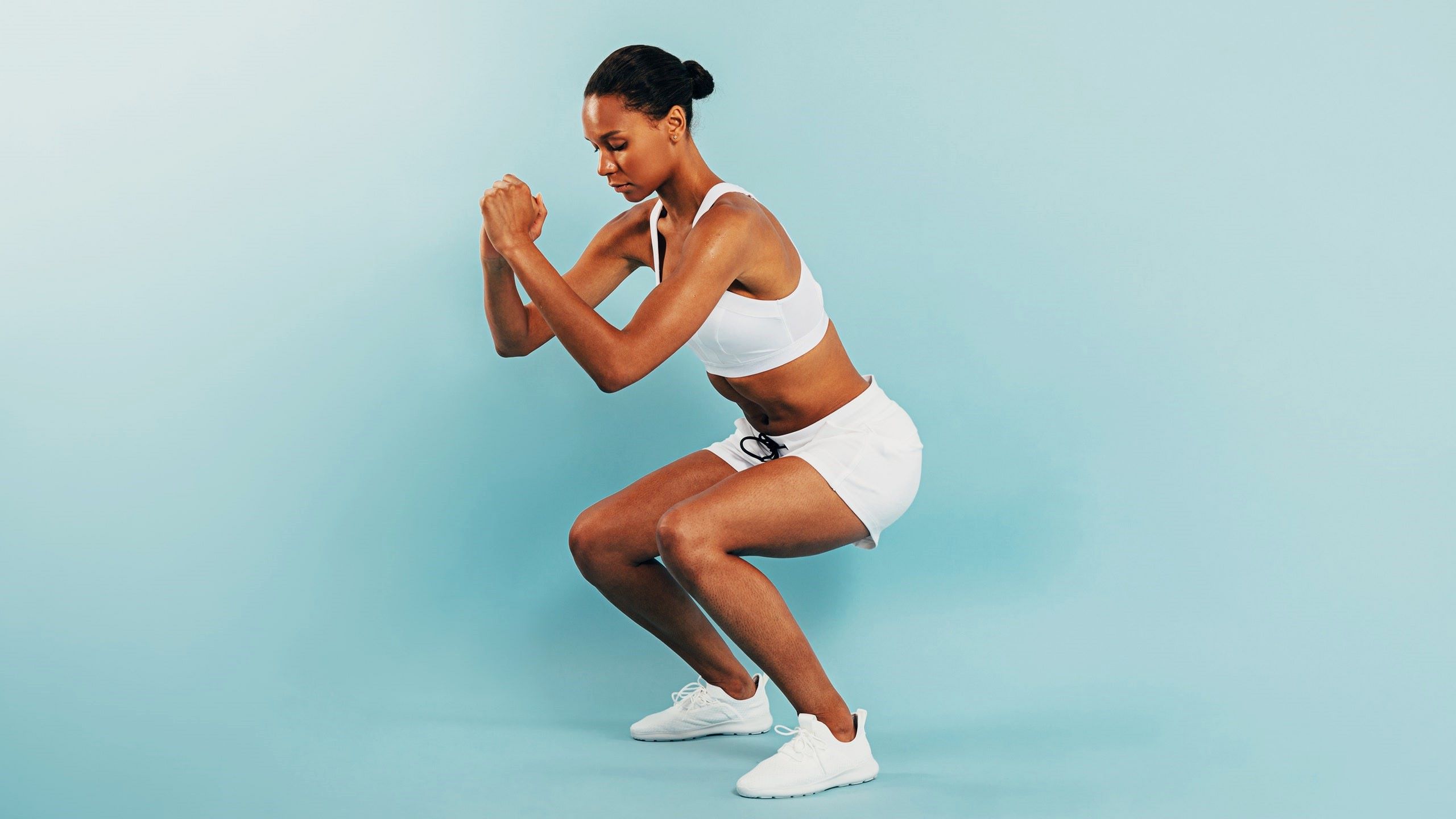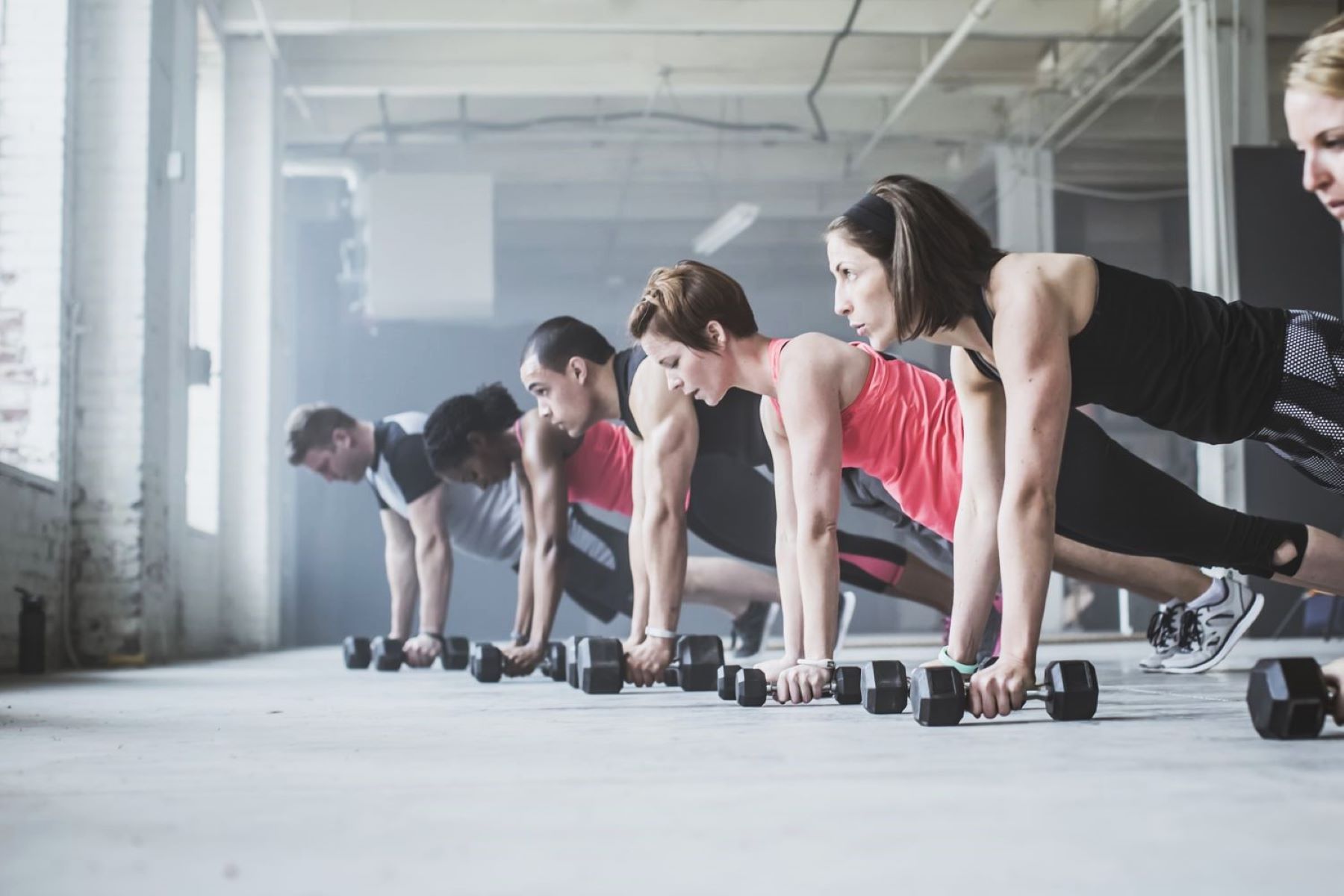Home>Training & Techniques>Effective Exercises To Strengthen Leg Muscles For Runners
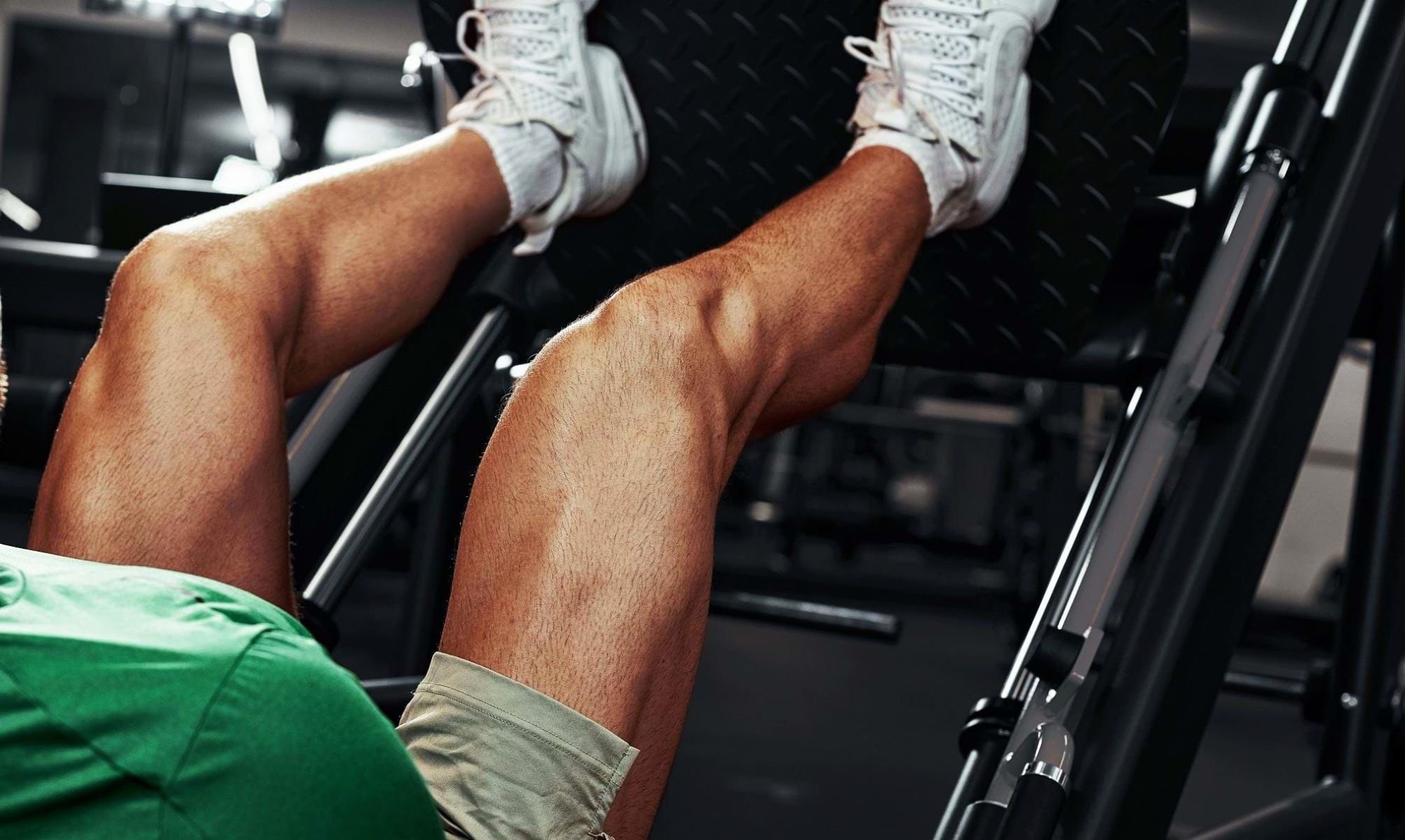

Training & Techniques
Effective Exercises To Strengthen Leg Muscles For Runners
Published: March 4, 2024
Discover effective training and techniques to strengthen leg muscles for runners. Improve your performance with targeted exercises and expert tips.
(Many of the links in this article redirect to a specific reviewed product. Your purchase of these products through affiliate links helps to generate commission for Therunningadvisor.com, at no extra cost. Learn more)
Table of Contents
Importance of Leg Strength for Runners
Leg strength is a crucial component of a runner's performance and overall well-being. Whether you're a seasoned marathoner or a casual jogger, having strong and resilient leg muscles can significantly enhance your running experience. Here's why leg strength is so important for runners:
-
Power and Endurance: Strong leg muscles provide the power and endurance needed to propel you forward during a run. The quadriceps, hamstrings, calves, and glutes work in unison to generate force and maintain a steady pace, especially during long-distance runs.
-
Injury Prevention: Well-developed leg muscles act as a protective shield against common running injuries. Strengthening the muscles around the knees, hips, and ankles can help stabilize these joints, reducing the risk of strains, sprains, and overuse injuries.
-
Improved Running Economy: Leg strength contributes to better running economy, which refers to the energy cost of maintaining a certain running speed. With stronger leg muscles, runners can achieve greater efficiency in their stride, leading to improved performance and reduced fatigue.
-
Enhanced Speed and Agility: Strong legs enable runners to generate more explosive power and speed. This is particularly beneficial for sprinters and those who participate in races that require quick bursts of acceleration and agility.
-
Balance and Stability: Leg strength plays a key role in maintaining balance and stability while running on various terrains. Strong leg muscles help absorb impact forces and stabilize the body, reducing the risk of falls and enhancing overall control during runs.
In essence, developing leg strength is not only beneficial for improving running performance but also for safeguarding against potential injuries. By incorporating targeted exercises to strengthen the leg muscles, runners can optimize their running experience and enjoy the numerous benefits that come with enhanced lower-body strength.
Squats and Lunges
Squats and lunges are fundamental exercises that target multiple muscle groups in the lower body, making them indispensable for runners looking to build strength, stability, and endurance. These compound movements engage the quadriceps, hamstrings, glutes, and calves, providing a comprehensive workout that mimics the dynamic demands of running.
Squats
Squats are renowned for their ability to strengthen the quadriceps, hamstrings, and glutes while also engaging the core for stability. The basic squat involves standing with feet shoulder-width apart, lowering the body by bending the knees and hips, and then returning to a standing position. Variations such as goblet squats, sumo squats, and jump squats can add diversity and intensity to the workout.
Lunges
Lunges are highly effective for targeting each leg individually, addressing muscle imbalances, and enhancing stability. The forward lunge, reverse lunge, and walking lunge variations engage the quadriceps, hamstrings, glutes, and calves while promoting coordination and balance. Additionally, lunges can be performed with or without weights, allowing for progressive overload to continually challenge the muscles.
By incorporating squats and lunges into their training regimen, runners can reap a multitude of benefits. These exercises not only strengthen the major muscle groups involved in running but also improve joint stability, mobility, and overall functional strength. Furthermore, the dynamic nature of squats and lunges closely simulates the movement patterns encountered during running, making them highly transferable to the demands of the sport.
In summary, squats and lunges are foundational exercises that play a pivotal role in developing the leg strength and stability essential for runners. Their versatility, scalability, and real-world applicability make them indispensable components of any comprehensive training program aimed at enhancing running performance and minimizing the risk of lower-body injuries.
Calf Raises and Toe Raises
Calf raises and toe raises are targeted exercises that specifically engage the calf muscles, which play a crucial role in providing propulsion and stability during running. These exercises are instrumental in strengthening the gastrocnemius and soleus muscles, which form the bulk of the calf complex. By incorporating calf raises and toe raises into their training routine, runners can effectively enhance their lower-leg strength, improve ankle stability, and optimize their running performance.
Read more: 7 Easy Exercises To Strengthen Your Joints
Calf Raises
Calf raises primarily target the gastrocnemius muscle, the larger and more superficial of the two primary calf muscles. This exercise can be performed using body weight, a calf raise machine, or a step platform. To execute a basic calf raise, one can start by standing with the balls of the feet on the edge of a step or platform, allowing the heels to lower below the level of the step, and then rising onto the toes as high as possible. This movement effectively contracts the calf muscles, providing a challenging workout that can be further intensified by holding weights or performing single-leg calf raises.
Toe Raises
Toe raises, also known as dorsiflexion exercises, target the soleus muscle, which lies beneath the gastrocnemius and is essential for ankle stability and push-off power during running. This exercise involves lifting the toes toward the shins against resistance, either using body weight or added resistance such as resistance bands or cables. Performing toe raises can help strengthen the anterior tibialis muscle, which supports the arch of the foot and aids in maintaining proper running form and foot mechanics.
By regularly incorporating calf raises and toe raises into their training regimen, runners can effectively target the often-neglected calf muscles, which are vital for maintaining a strong and efficient running stride. Strong calf muscles contribute to improved push-off power, enhanced ankle stability, and reduced risk of calf strains and Achilles tendon injuries, all of which are essential for runners aiming to maximize their performance and minimize the likelihood of lower-leg issues.
In essence, calf raises and toe raises are indispensable exercises for runners seeking to fortify their lower-leg muscles and enhance their running capabilities. By diligently integrating these exercises into their training routine, runners can cultivate resilient calf muscles, bolster ankle stability, and ultimately elevate their overall running experience.
Deadlifts and Romanian Deadlifts
Deadlifts and Romanian deadlifts are compound exercises that target the posterior chain, including the hamstrings, glutes, and lower back. These movements are highly effective for runners seeking to develop strength, power, and resilience in the muscles essential for maintaining proper running mechanics and preventing injuries.
Deadlifts
The conventional deadlift is a foundational strength exercise that engages multiple muscle groups, making it a valuable addition to a runner's training regimen. To perform a deadlift, one begins by standing with feet hip-width apart, gripping a barbell with hands shoulder-width apart, and then lifting the barbell from the ground to a standing position by extending the hips and knees. The deadlift primarily targets the hamstrings, glutes, and erector spinae, while also engaging the quadriceps, core, and upper back muscles for stabilization.
Romanian Deadlifts
Romanian deadlifts, often referred to as RDLs, are a variation of the traditional deadlift that places greater emphasis on the hamstrings and glutes. In this exercise, the movement pattern involves hinging at the hips while maintaining a slight bend in the knees, allowing the barbell to descend along the front of the legs until a stretch is felt in the hamstrings, and then returning to a standing position by driving the hips forward. Romanian deadlifts effectively isolate the posterior chain muscles, promoting strength, flexibility, and stability in the hip and knee joints.
By incorporating deadlifts and Romanian deadlifts into their training routine, runners can reap numerous benefits. These exercises not only strengthen the key muscles involved in running propulsion and stability but also improve overall body awareness, posture, and lifting mechanics. Additionally, the engagement of the core and stabilizing muscles during deadlift variations contributes to enhanced spinal integrity and reduced risk of lower back injuries, which are common concerns for runners.
In summary, deadlifts and Romanian deadlifts are invaluable exercises for runners aiming to fortify their posterior chain muscles and enhance their running performance. By integrating these compound movements into their training program with proper form and progressive overload, runners can cultivate robust lower-body strength, improve running economy, and mitigate the risk of lower back and hamstring injuries, ultimately contributing to a more resilient and efficient running experience.
Step-Ups and Box Jumps
Step-ups and box jumps are dynamic plyometric exercises that target the lower body, particularly the quadriceps, hamstrings, glutes, and calves. These explosive movements not only enhance muscular strength and power but also improve coordination, agility, and proprioception, making them invaluable for runners looking to elevate their performance and resilience.
Step-Ups
Step-ups involve stepping onto a raised platform, such as a sturdy bench or plyometric box, using one leg at a time. This exercise effectively mimics the motion of ascending inclines or stairs, making it highly relevant to running mechanics. By performing step-ups, runners can strengthen each leg individually, address muscle imbalances, and improve the stability and power of the lower body.
To execute a step-up, one begins by standing in front of the platform with the torso upright and the core engaged. The leading leg is placed onto the platform, and the body is lifted upward by extending the hip and knee of the working leg. The trailing leg is then brought up to meet the leading leg before carefully stepping back down to the starting position. This movement pattern engages the quadriceps, hamstrings, glutes, and calf muscles while promoting balance and control.
Box Jumps
Box jumps are plyometric exercises that involve explosively jumping onto a raised platform, typically a plyometric box or sturdy surface. This movement requires a rapid and forceful extension of the hips, knees, and ankles, engaging the lower body muscles in a coordinated and explosive manner. Box jumps are renowned for developing power, reactive strength, and neuromuscular coordination, all of which are essential for runners seeking to improve their speed, agility, and overall lower-body explosiveness.
To perform a box jump, one begins in a semi-squat position, generating momentum by quickly descending into a deeper squat and then forcefully jumping onto the box, landing softly and absorbing the impact with bent knees. The movement is then reversed as the individual steps or jumps back down to the starting position, ready to repeat the explosive movement. Box jumps effectively recruit the quadriceps, hamstrings, glutes, and calf muscles while also challenging the cardiovascular system and enhancing overall athleticism.
By incorporating step-ups and box jumps into their training routine, runners can enhance their lower-body strength, power, and coordination, ultimately improving their running performance and resilience. These plyometric exercises not only simulate the dynamic demands of running but also provide a platform for developing explosive force production and enhancing the neuromuscular pathways involved in sprinting, jumping, and quick directional changes.
In essence, step-ups and box jumps are indispensable components of a comprehensive training program for runners. By integrating these dynamic exercises with proper form and progression, runners can cultivate robust lower-body strength, improve their running economy, and elevate their overall athletic prowess, contributing to a more resilient and efficient running experience.
Leg Press and Leg Extension
The leg press and leg extension exercises are instrumental in targeting specific muscle groups in the lower body, providing runners with a comprehensive approach to strengthening the quadriceps, hamstrings, and glutes. These exercises offer unique benefits that contribute to improved running performance, lower-body stability, and injury prevention.
Leg Press
The leg press is a compound exercise that primarily targets the quadriceps, hamstrings, and glutes while also engaging the calves and hip muscles to a lesser extent. This exercise is typically performed using a leg press machine, where the individual sits with their back against a padded backrest and pushes a weighted platform away from their body using their legs. The leg press allows for a controlled and stable movement pattern, making it an effective way to build lower-body strength without placing excessive stress on the back and spine.
By adjusting the foot placement on the platform, runners can emphasize different areas of the leg musculature. Placing the feet higher on the platform targets the glutes and hamstrings, while a lower foot placement shifts the focus to the quadriceps. Additionally, single-leg variations of the leg press can help address muscle imbalances and enhance unilateral leg strength, which is beneficial for running mechanics and injury prevention.
Leg Extension
Leg extensions isolate the quadriceps muscles, providing a focused and intense workout for the front of the thigh. This exercise is typically performed using a leg extension machine, where the individual sits with their knees bent and extends their lower legs against resistance by lifting the padded lever. Leg extensions effectively target the vastus medialis, vastus lateralis, and rectus femoris, contributing to improved knee stability and strength.
By adjusting the seat position and foot placement, runners can modify the emphasis on specific areas of the quadriceps, allowing for targeted development of the muscle group. Leg extensions are particularly beneficial for addressing quadriceps imbalances, rehabilitating knee injuries, and enhancing the overall strength and stability of the knee joint, which is essential for runners seeking to minimize the risk of overuse injuries and improve their running mechanics.
Incorporating the leg press and leg extension exercises into a comprehensive training program can significantly enhance a runner's lower-body strength, muscular balance, and overall running performance. These exercises provide a targeted approach to strengthening the key muscle groups involved in running, promoting stability and power while mitigating the risk of lower-body injuries. By integrating the leg press and leg extension with proper form and progressive overload, runners can optimize their lower-body strength and resilience, ultimately contributing to a more efficient and sustainable running experience.
Plyometric Exercises for Explosive Power
Plyometric exercises are dynamic movements that involve rapid stretching and contracting of muscles, aiming to enhance explosive power, agility, and neuromuscular coordination. These exercises are particularly beneficial for runners seeking to improve their sprinting ability, stride efficiency, and overall lower-body explosiveness.
Benefits of Plyometric Training for Runners
Plyometric exercises offer a myriad of benefits for runners, including the development of fast-twitch muscle fibers, improved reactive strength, and enhanced proprioception. By incorporating plyometrics into their training regimen, runners can effectively increase their ability to generate force rapidly, leading to more powerful strides and quicker acceleration during sprints. Additionally, plyometric training can improve the stretch-shortening cycle of muscles, allowing for greater energy storage and release, which is essential for maximizing running speed and efficiency.
Examples of Plyometric Exercises
-
Bounding: Bounding involves exaggerated running strides with an emphasis on explosive push-off and air time. This exercise promotes powerful leg extension and enhances coordination, making it valuable for improving sprinting mechanics and overall lower-body explosiveness.
-
Depth Jumps: Depth jumps require an individual to step off a raised platform and immediately explode upward upon landing. This exercise enhances reactive strength and neuromuscular coordination, contributing to improved force production and quick ground contact times during running.
-
Plyometric Push-Ups: Plyometric push-ups involve explosive pushing movements that propel the body off the ground. This exercise targets the upper body and core while promoting rapid force generation, which is essential for maintaining upper-body stability and arm drive during running.
-
Squat Jumps: Squat jumps involve descending into a squat position and then explosively jumping upward. This exercise targets the quadriceps, hamstrings, and glutes, promoting lower-body power and enhancing the ability to generate force during the propulsion phase of running.
Considerations for Plyometric Training
When incorporating plyometric exercises into their training routine, runners should prioritize proper form, adequate recovery, and progressive overload. It is essential to start with foundational plyometric movements and gradually progress to more advanced exercises as strength and coordination improve. Additionally, allowing sufficient recovery between plyometric sessions is crucial to prevent overuse injuries and optimize performance gains.
By integrating plyometric exercises into their training program, runners can enhance their explosive power, agility, and overall running performance. These dynamic movements not only improve muscular strength and coordination but also contribute to more efficient and powerful running mechanics, ultimately leading to a more resilient and dynamic running experience.
Resistance Band Workouts for Leg Muscles
Resistance band workouts offer a versatile and effective means of targeting the leg muscles, providing runners with a portable and adaptable training tool to enhance lower-body strength, stability, and flexibility. These workouts, when integrated into a comprehensive training regimen, can significantly contribute to improved running performance and injury prevention.
Benefits of Resistance Band Workouts
Resistance band exercises for the leg muscles offer several distinct advantages for runners. The variable resistance provided by the bands challenges the muscles throughout the entire range of motion, promoting balanced strength development and enhancing muscle stability. Additionally, resistance bands allow for multi-planar movements, enabling runners to engage the muscles from different angles, which closely mimics the dynamic demands of running. Furthermore, the portability and accessibility of resistance bands make them a convenient option for incorporating strength training into various settings, whether at home, in the gym, or while traveling.
Examples of Resistance Band Exercises
1. Lateral Band Walks
Lateral band walks target the hip abductors and external rotators, which are essential for maintaining proper hip and knee alignment during running. By placing a resistance band around the thighs and assuming a partial squat position, runners can perform side-to-side steps, effectively engaging the lateral hip muscles and promoting hip stability.
2. Clamshells
Clamshell exercises with a resistance band are particularly effective for activating the gluteus medius, a key muscle for hip stability and lateral movement control. By securing a resistance band around the thighs and performing hip abduction movements while lying on one's side, runners can strengthen the hip abductors and mitigate the risk of common overuse injuries.
3. Standing Leg Curls
Standing leg curls using a resistance band target the hamstrings, promoting strength and flexibility in this muscle group. By anchoring the resistance band at ankle height and performing controlled knee flexion against the band's resistance, runners can effectively engage the hamstrings while also challenging their balance and stability.
4. Resistance Band Squats
Resistance band squats provide an excellent way to target the quadriceps, hamstrings, and glutes while also engaging the core for stability. By standing on the resistance band with feet shoulder-width apart and performing squats while holding the band handles at shoulder height, runners can effectively simulate the resistance encountered during running movements, promoting functional strength and power development.
Integration and Progression
Integrating resistance band workouts for the leg muscles into a runner's training routine can be done progressively, starting with lighter resistance and gradually increasing the challenge as strength and stability improve. By incorporating these exercises as part of a well-rounded strength training program, runners can optimize their lower-body strength, enhance muscle balance, and ultimately improve their running performance and resilience.
In summary, resistance band workouts for the leg muscles offer a convenient and effective means of targeting key muscle groups essential for running. By incorporating these exercises into their training regimen, runners can enhance their lower-body strength, stability, and flexibility, ultimately contributing to a more robust and efficient running experience.

